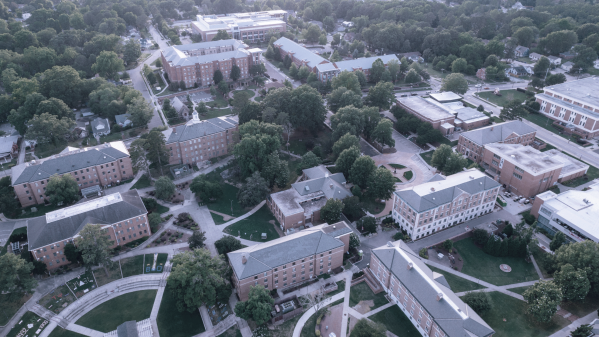Four approaches K-12 IT directors can take to address security threats
Questions about the safety and security of U.S. schools are reignited every couple of months when another shooting or cyberattack thrusts the conversation back into the spotlight.
How can such tragedies be avoided?
While technology can’t stop a school shooting from happening, it can certainly help . IT directors can play a central role in campus security by providing administrators and faculty members with the tools needed to anticipate and prevent both physical and digital threats. Here are four approaches they can take to prevent and manage security threats:
Student data analysis
Developments in big data have given faculty members the tools to make informed decisions to improve students’ overall education experience. While FERPA guidelines place restrictions on how data can be collected and used, there are several types of data that K-12 faculty can collect about students, including:
- Student identity date: Demographic and biometric information, including data like fingerprints and eye scans.
- User interaction data: Engagement metrics for educational content.
- Inferred content data: Data concerning how instructional material improves student proficiency.
- System-wide data: Administrative data about students, including attendance, disciplinary records and overall academic performance.
- Inferred student data: Inferences based on teacher, content and student data that can be used to make predictions about student outcomes.
There are obvious academic uses for this information. But more than that, software can help educators draw inferences about student safety and assess potential risks.
If specific student behaviors have a correlation with issues such as mental health concerns, mistreatment at home or gang affiliations, inferences from system-wide data can signal those problems. Big data analysis can be used to “flag” students at risk for further investigation by school counselors or administrators. By dealing with root issues, this approach can prevent warning signs from escalating into dangerous situations.
Social media monitoring
Student monitoring can take place outside of the classroom as well. Many districts opt to monitor student behavior on social media by using software designed to alert educators when students write certain words or terms (which, depending on the platform, can be established by the user). When this data is placed in a broader context via system-wide and inferred student data analysis, it paints a more complete picture about learners’ well-being.
This permits school staff to take action in order to protect students from crises both on and off campus. For instance, if students express the desire to harm themselves, these individuals can be contacted by trained staff who know the appropriate way to intervene.
Of course, there are ethical concerns about collecting student data. It is important that districts abide by federal and state guidelines by only gathering information required to ensure student safety and academic achievement. However, messages on public forums such as social media sites are typically open to the public. Because individuals have no expectation of privacy while using these sites, examining this information is not an invasion of privacy. Still, use discretion.
Cybersecurity
Cybersecurity is an essential component of any district’s security plan. Every school district is a target for cybercriminals.
For a glimpse into how pervasive K-12 school district data breaches are in the U.S., take a look at the K-12 Cybersecurity Resource Center , a site operated by Doug Levin, the founder of EdTech Strategies, LLC. Since 2016, more than 350 incidents have occurred. At least one of those incidents resulted in threats of violence against children in several school districts.
In order to avoid becoming a part of this statistic, IT directors should adopt the technology needed to protect student data and enforce cybersecurity basics . Some include:
- Implement strong password policies and educate staff, parents and students about phishing and other cybersecurity threats. This can also be a boon to students who may require technological savvy in future online learning programs.
- Ensure school software is kept up-to-date and use security software to prevent unauthorized software from being installed.
- Track school devices and assets that contain or are used to access sensitive information. Early smart home adopters — among the earliest adopters of IoT — have demonstrated that smart technology can also be used to deter thieve s .
- Stay abreast of current trends in cybersecurity. With each new year, new threats emerge — inform staff about these and provide them with the information and means with which to prevent your district from falling victim to a data breach.
On-campus surveillance
Surveillance technology has obvious applications in educational settings, though it should be evaluated critically and used with extreme caution.
There have been major advancements in surveillance technology in recent years, including facial recognition software to track who enters and exits a school building and deter criminals; object recognition software to identify weapons or other prohibited items; and license plate detection software to determine if visitors to campus are known predators. Student identity data can be used to grant access to school grounds or technology exclusively to authorized individuals. Examples of this include fingerprint or retinal scanners.
Such developments are beginning to see use in public schools. According to Gizmodo , “schools are spending millions to outfit their campuses with some of the most advanced surveillance technology available.”
This technology can improve campus security materially, giving administrators the ability to anticipate and react to dangerous situations much more efficiently. Some systems even allow local law enforcement to access information in real time in the event of a crisis situation.
Note, however, that there is a delicate balance between creating a secure environment and creating an environment that is conducive to learning. A brief on Education Dive notes that “the presence of scanners at every entryway coupled with security cameras — not just in halls, but also in classrooms — can create a prison-like atmosphere … While security is key, schools should feel like a welcoming environment.”
These are some of the strategies IT directors employ today in order to protect K-12 schools. By using a combination of these methods, education leaders can reduce the number of threats at their schools and ultimately regain trust from the public on the basis that they can provide a secure learning environment for students.
Bob Hand writes regularly from Boise, Idaho,
on the way that teachers use technology in the classroom. His studies at the
University of South Carolina and his experiences at high schools across the
state allowed him greater insight into current edtech issues.




